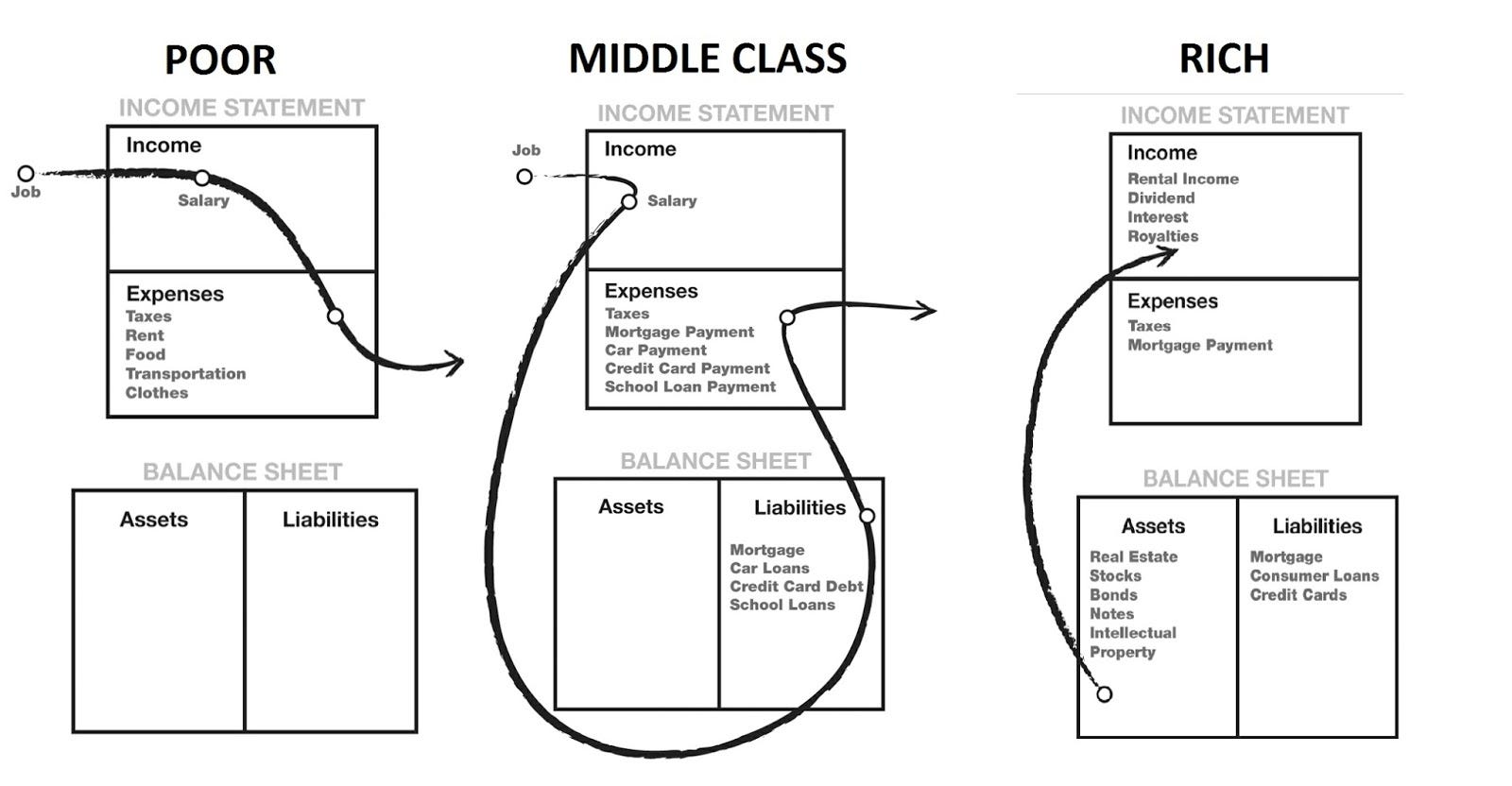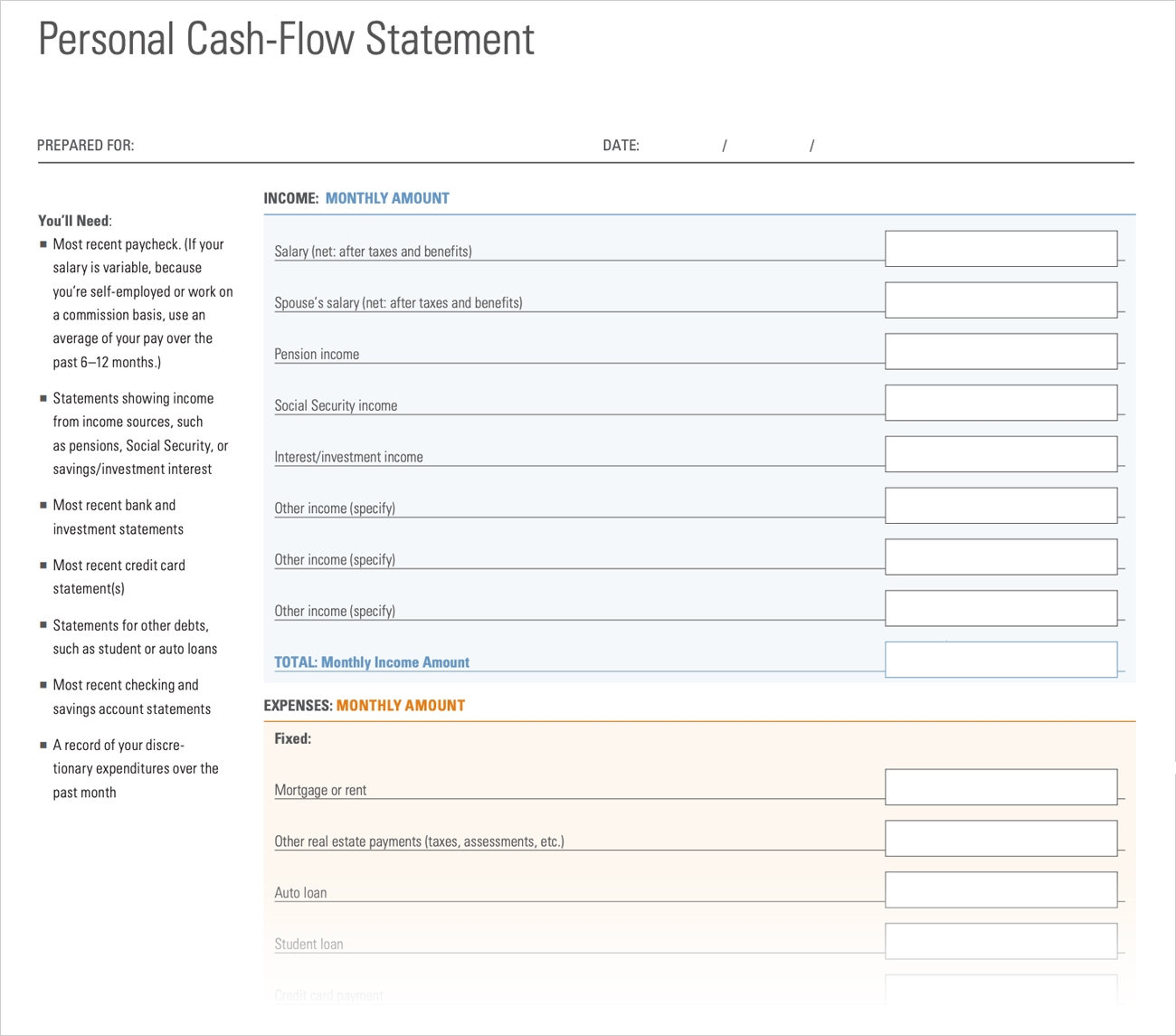

Finance
What Is Cash Flow Positive
Published: December 20, 2023
Learn what cash flow positive means in finance and how it can benefit your financial situation. Gain insights on managing your finances effectively.
(Many of the links in this article redirect to a specific reviewed product. Your purchase of these products through affiliate links helps to generate commission for LiveWell, at no extra cost. Learn more)
Table of Contents
Introduction
Cash flow is a fundamental concept in finance that refers to the movement of money into and out of a business. It is a critical measure of a company’s financial health and stability. Cash flow positive, in particular, is a term that often comes up in discussions about business profitability and sustainability. In simple terms, being cash flow positive means that a company has more cash coming in than going out.
Having a positive cash flow is crucial for the long-term success of any business. It enables a company to cover its operational expenses, invest in growth opportunities, and meet its financial obligations, such as debt payments and shareholder dividends. Cash flow positive companies have the ability to weather economic downturns and have the flexibility to effectively manage their resources.
While positive cash flow is desirable, it is not always easy for businesses to achieve. Many factors, such as industry conditions, market fluctuations, and internal operations, can impact a company’s cash flow status. However, with proper financial management and strategic planning, businesses can develop strategies to improve their cash flow position.
In this article, we will delve into the concept of cash flow positive, explore its importance, examine the factors that affect cash flow, and discuss strategies that businesses can employ to achieve and maintain a positive cash flow. We will also analyze real-life case studies of cash flow positive companies to provide valuable insights into their successful practices.
By understanding the concept of cash flow positive and the strategies necessary to achieve it, businesses can position themselves for long-term financial stability and growth. So, let’s dive in and explore the world of cash flow positive businesses!
Definition of Cash Flow Positive
Cash flow positive refers to a financial condition where a company has more cash inflows than cash outflows over a given period of time. In simpler terms, it means that the amount of money coming into the business is greater than the amount going out. It is a key indicator of a company’s financial health, stability, and ability to generate and manage cash.
Positive cash flow can be achieved through various sources, including revenues from sales, investments, loans, or any other form of cash inflow. It is important to distinguish cash flow from profits. A company can be profitable but still experience negative cash flow if the majority of the profits are tied up in accounts receivable, inventory, or other non-cash assets. On the other hand, a company can have negative net income but still be cash flow positive if it is generating enough cash from other sources.
Having a positive cash flow is crucial for several reasons. First, it ensures that a company can meet its financial obligations, such as paying employees, suppliers, and creditors, as well as covering rent, utilities, and other operating expenses. Positive cash flow also enables a company to pursue growth opportunities, invest in research and development, and expand its operations. This is especially important for businesses looking to attract investors, secure loans, or position themselves for future acquisitions.
Monitoring and managing cash flow is a critical aspect of financial management. Businesses need to have a clear understanding of their cash inflows and outflows to make informed decisions and maintain financial stability. By continually analyzing cash flow patterns and identifying potential bottlenecks or areas of improvement, companies can implement strategies to optimize their cash flow position.
To summarize, being cash flow positive means that a company has more cash coming in than going out over a specific timeframe. It is a vital metric that indicates the financial health and stability of a business. Positive cash flow enables companies to meet their financial obligations, pursue growth opportunities, and maintain their competitive edge in the market.
Importance of Cash Flow Positive
Having a positive cash flow is of utmost importance for businesses. It serves as a vital indicator of financial health and plays a significant role in the overall stability and growth of a company. Here are some key reasons why cash flow positive is crucial:
- Operating Expenses: Positive cash flow ensures that a company can cover its day-to-day operating expenses. It allows businesses to pay their bills, purchase inventory, and make necessary investments in equipment and technology. Without adequate cash flow, businesses may struggle to meet these essential financial obligations, leading to disruption in operations and potential insolvency.
- Financial Stability: Positive cash flow provides a solid foundation for financial stability. It allows businesses to weather unforeseen challenges and economic downturns. During tough times, companies with positive cash flow have the flexibility to adjust their operations, manage their resources, and continue their business activities without relying heavily on external financing.
- Growth and Expansion: Cash flow positive companies have the capacity to invest in growth opportunities. They can allocate funds towards expanding products or services, entering new markets, or acquiring other businesses. Positive cash flow also enables businesses to attract investors or secure loans for further expansion, as it demonstrates the ability to generate consistent returns and effectively manage financial resources.
- Debt Repayment: Positive cash flow is crucial for meeting debt obligations. Regular cash inflows ensure that a company can timely repay its loans, avoiding default and preserving its creditworthiness. This not only maintains a positive relationship with lenders but also opens doors to future borrowing at favorable terms if necessary.
- Investor Confidence: Cash flow positive companies are more appealing to investors. Investors see positive cash flow as an indication of financial strength and stability. It shows that the company is generating enough cash to sustain its operations and provide returns on investment. Positive cash flow can attract potential investors, drive up the company’s stock value, and enhance its overall market reputation.
In summary, cash flow positive is crucial for a company’s financial stability, growth, and sustainability. It allows businesses to cover operating expenses, maintain financial health, invest in growth opportunities, repay debts, and attract investors. By managing cash flow effectively, businesses can position themselves for long-term success and create a solid foundation for future growth.
Factors Affecting Cash Flow
Cash flow within a business is influenced by various factors, both internal and external. Understanding these factors is essential for effectively managing cash flow and ensuring a positive financial position. Here are some key factors that can impact a company’s cash flow:
- Sales and Revenue: The volume and timing of sales and revenue directly affect cash inflow. If there are delays in receiving payments from customers or a decrease in sales, it can disrupt cash flow and create a strain on the company’s finances. Moreover, changes in pricing, market demand, or competition can also impact sales revenue and subsequently affect cash flow.
- Expenses and Operational Costs: The expenses and costs associated with running a business have a direct impact on cash outflows. These include raw materials, labor, utilities, rent, and other overhead expenses. Any increase in these costs without a corresponding increase in revenue can put pressure on cash flow and potentially lead to a negative cash position.
- Inventory Management: Maintaining an optimal level of inventory is crucial for managing cash flow. Excess inventory ties up cash, while insufficient inventory can result in lost sales. Effective inventory management ensures a balance between having enough inventory to meet customer demand and minimizing carrying costs, thereby positively impacting cash flow.
- Accounts Receivable and Payable: The timing of receiving payments from customers and making payments to suppliers and creditors can significantly impact cash flow. If customers delay payments or if the company has lenient credit terms, it can negatively affect incoming cash flow. On the other hand, delaying payments to suppliers can result in strained relationships or even halt the supply chain, affecting the company’s ability to operate smoothly.
- Seasonality and Market Fluctuations: Many businesses experience fluctuations in cash flow due to seasonality or market dynamics. For example, businesses in the retail industry tend to have higher cash flow during holiday seasons. Similarly, businesses that are highly dependent on commodity prices or currency exchange rates may face cash flow challenges due to market volatility.
- Debt Servicing: If a company has outstanding debt, the repayment of principal and interest can impact cash flow. Debt servicing obligations, such as loan repayments, can put pressure on cash flow, especially if the company is already facing financial challenges. It is crucial to manage debt levels and structure repayment schedules in a way that aligns with the company’s cash flow capabilities.
These are just a few of the many factors that can impact a company’s cash flow. It is important for businesses to regularly monitor and analyze these factors to identify potential risks or opportunities for improving cash flow management. This can be done through proper budgeting, cash flow forecasting, and implementing effective financial strategies.
By understanding and proactively addressing the factors influencing cash flow, businesses can optimize their cash flow position and maintain a healthy financial standing.
Strategies to Achieve Cash Flow Positive
Achieving and maintaining a positive cash flow is a critical objective for businesses of all sizes. While it can be challenging, there are several strategies that companies can implement to improve their cash flow position. Here are some effective strategies to achieve cash flow positive:
- Streamline and Control Expenses: Carefully review all expenses and identify areas where costs can be reduced or eliminated. Negotiate better deals with suppliers, optimize inventory management to reduce carrying costs, and look for ways to minimize operational expenses without compromising quality.
- Improve Accounts Receivable: Implement effective credit control measures to ensure timely payments from customers. This can include offering incentives for early payments, setting clear credit terms, and promptly following up on overdue invoices. Consider implementing a robust accounts receivable system and conduct regular credit checks on new customers.
- Manage Inventory Levels: Analyze demand patterns and adjust inventory levels accordingly to minimize carrying costs. Implement just-in-time inventory management strategies to ensure that inventory is received and sold in a timely manner. Also, consider negotiating favorable payment terms with suppliers to improve cash flow.
- Negotiate Supplier Contracts: Evaluate existing supplier contracts and negotiate better payment terms, discounts, or rebates. Consolidate purchases with a smaller number of suppliers to leverage bulk-buying power and negotiate more favorable terms. This can help improve cash flow and reduce the strain on working capital.
- Optimize Pricing: Regularly review pricing strategies to ensure that products or services are priced competitively. Avoid underpricing, which can erode profit margins, and focus on selling value to capture higher margins. Implement dynamic pricing strategies that consider market demand and competitor pricing to maximize revenue and improve cash flow.
- Improve Cash Flow Forecasting: Accurate cash flow forecasting allows businesses to anticipate any potential cash flow gaps or surpluses. It helps identify when additional financing may be required or when excess cash can be invested. Regularly review and update cash flow projections based on changing market conditions and business performance.
- Monitor and Manage Debt: Be diligent in managing debt obligations and ensure that debt servicing is sustainable within the current cash flow. Consider refinancing debt at lower interest rates or negotiating longer payment terms to ease the strain on cash flow. Avoid taking on excessive debt and focus on improving the debt-to-equity ratio.
- Explore Alternative Financing Options: In times of cash flow challenges, consider alternative financing options such as invoice financing, asset-based lending, or revolving lines of credit. These options can help bridge gaps in cash flow or provide working capital to support business operations.
Implementing these strategies requires careful planning, monitoring, and regular analysis of the financial performance of the business. By taking a proactive approach and optimizing key elements of the cash flow cycle, businesses can increase their chances of achieving and maintaining a positive cash flow position.
Remember, cash flow management is a continuous process that requires ongoing attention and adjustment. Regularly review and update financial strategies based on changing market conditions, customer behavior, and internal business performance to ensure a healthy and sustainable cash flow position.
Case Studies of Cash Flow Positive Companies
Examining real-life examples of cash flow positive companies can provide valuable insights into the strategies and practices that contribute to their success. Let’s explore a couple of case studies:
Case Study 1: Company X
Company X, a software development company, has consistently maintained a positive cash flow position despite operating in a highly competitive market. One of the key factors contributing to their cash flow success is their efficient project management and billing processes. They invoice clients promptly upon completion of milestones, and their diligent follow-up on overdue invoices ensures timely cash inflows.
Moreover, Company X has implemented a stringent expense control system. They closely monitor their operating expenses and regularly negotiate favorable contracts with suppliers to minimize costs. By carefully managing their expenses, they are able to maintain a healthy cash flow and allocate funds for strategic investments in research and development and employee training.
Case Study 2: Company Y
Company Y, a retail clothing brand, has maintained positive cash flow through effective inventory management. They analyze customer shopping trends and adjust their inventory levels accordingly. By aligning their purchasing decisions with customer demand, they minimize inventory carrying costs and reduce cash flow constraints.
In addition, Company Y has established strong relationships with their suppliers. They have negotiated favorable payment terms, enabling them to better manage their cash flow. By taking advantage of discounts and extended payment periods, they optimize their cash conversion cycle and maintain a positive cash flow position.
Both Company X and Company Y demonstrate the importance of effective cash flow management in maintaining a positive financial position. By implementing strategies such as prompt invoicing, expense control, efficient inventory management, and favorable supplier contracts, these companies have been able to successfully achieve and sustain positive cash flow, ensuring their long-term financial stability.
These case studies highlight the importance of adopting practices that align with the specific needs and industry dynamics of a business. By learning from successful cash flow positive companies, businesses can gain valuable insights and apply relevant strategies to improve their own cash flow management.
Conclusion
Cash flow positive is a crucial aspect of financial management and plays a vital role in the success and sustainability of a business. It ensures that a company has more cash coming in than going out, enabling it to meet operational expenses, pursue growth opportunities, and maintain financial stability. By understanding the definition and importance of cash flow positive, businesses can focus on implementing effective strategies to achieve and maintain a positive cash flow position.
Factors such as sales and revenue, expenses, inventory management, and market dynamics can significantly impact cash flow. By proactively managing these factors and implementing strategies to streamline expenses, improve accounts receivable, optimize inventory levels, and negotiate favorable supplier contracts, businesses can enhance their cash flow position.
Cash flow positive companies exemplify the benefits of effective financial management. Case studies of successful companies demonstrate the importance of prompt invoicing, expense control, efficient inventory management, and strategic supplier relationships in achieving positive cash flow. By learning from these examples and applying relevant strategies, businesses can enhance their own cash flow management practices and improve their financial health.
In conclusion, maintaining a positive cash flow is crucial for the long-term success and growth of a business. By prioritizing cash flow management, implementing effective strategies, and constantly monitoring and analyzing cash flow patterns, businesses can position themselves for financial stability, operational efficiency, and increased opportunities for growth.
References
1. Saunders, A., & Cornett, M. (2018). Financial Management: Theory and Practice. Cengage Learning.
2. Brigham, E., & Ehrhardt, M. (2016). Financial Management: Theory and Practice. Cengage Learning.
3. Gitman, L., & Zutter, C. (2018). Principles of Managerial Finance. Pearson Education.
4. Kimmel, P. D., Weygandt, J. J., & Kieso, D. E. (2019). Financial Accounting: Tools for Business Decision-Making. John Wiley & Sons.
5. Block, S. B., Hirt, G. A., & Danielsen, B. R. (2018). Foundations of Financial Management. McGraw-Hill Education.
6. Houston, J. F., & Brigham, E. F. (2015). Fundamentals of Financial Management. Cengage Learning.
7. Ross, S. A., Westerfield, R. W., & Jordan, B. D. (2020). Essentials of Corporate Finance. McGraw-Hill Education.
8. Financial Management Association International (FMA). Retrieved from: www.fma.org
9. Investopedia. “Cash Flow.” Retrieved from: www.investopedia.com/terms/c/cashflow.asp
10. Small Business Administration (SBA). “Understanding Cash Flow Analysis.” Retrieved from: www.sba.gov/business-guide/plan-your-business/financial-projections/understanding-cash-flow-analysis
Please note that the above references serve as a starting point for further research and provide a broader understanding of the topic. It is recommended to consult additional sources and professional advice for specific financial management needs.














